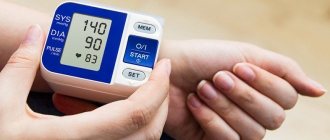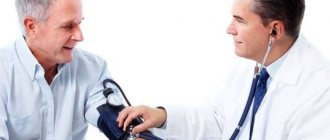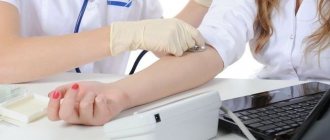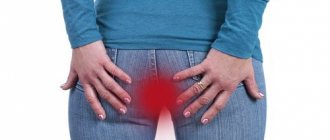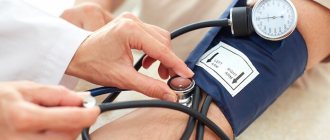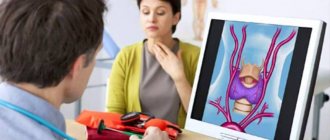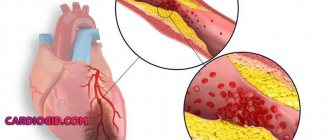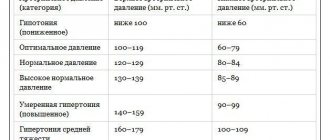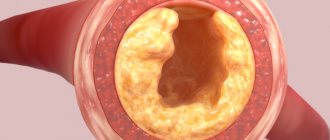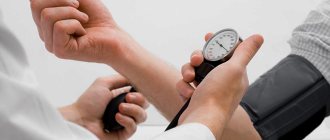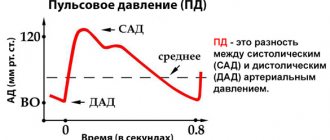According to medical standards, ideal pressure indicators are considered to be 120 over 80. But sometimes the tonometer can show us strange numbers, for example, 105 over 65 - pressure, most likely indicating the presence of hypotension, that is, a deviation from the norm at the lower limit.
But is everything so clear, do the numbers on the tonometer depend on age and individual characteristics? If the pressure remains at the level of 105 to 65, you will find out what to do and whether it needs to be increased from our article.
What does the tonometer reading 105 to 65 mean?
The vascular walls are constantly exposed to pressure from the blood passing through the blood vessels. The pumping function of the heart and the elasticity of blood vessels have a direct impact on the strength of this pressure.
The highest pressure, systolic, is recorded at the moments when cardiac contraction occurs, and the stage of the cardiac cycle itself, when pressure increases (heart contraction), is called systole.
In the intervals between heart contractions, the heart muscles relax and blood pressure decreases. This value (second digit) is called diastolic, and the corresponding stage of the cardiac cycle, when the muscles are relaxed, is called diastole.
An electronic blood pressure monitor typically displays pressure readings from top to bottom: systolic pressure will be located at the top of the display, and diastolic pressure will be at the bottom. That is, the upper number 105 is the person’s systolic pressure, and the lower 65 is the diastolic pressure.
This is an alarm bell and a reason for a person to pay more attention to their health, because a pressure of 105 over 65 is slightly lower than the reference readings of 120/80. In some cases, it indicates the beginning of some pathological processes in the body.
What does each number mean?
Blood pressure is a measure of the pressure that blood exerts on the walls of blood vessels as it passes through them. The blood flow is created by the heart, which works like a pump. The heart muscle has the ability to contract (systole) and relax (diastole). During the first period, blood is pushed into large arteries, which is accompanied by the highest pressure levels. This is the first number. In this case we are talking about 100. The indicator is called systolic or upper (in common parlance) pressure.
During relaxation, the second number is recorded (in this case, 60). It is also called diastolic pressure or lower. Experts pay attention not only to these numbers, but also calculate the difference between them, calling this indicator pulse pressure. The blood pressure level is formed under the influence of the following factors:
- The force with which the heart pushes blood into the vessels.
- Hormonal background.
- Conditions of the central and peripheral nervous system.
- Conditions and indicators of arterial elasticity.
- The total volume of blood circulating in the body.
Important! The normal blood pressure level is considered to be 120–129/80–84 mmHg. Art.
Causes
Pressure 105 over 65 has a lot of prerequisites of a different nature: both physiological (caused by improper functioning of internal organs and systems, unhealthy lifestyle, etc.) and psychosomatic (caused by stress, as a result of worrying, etc.). In addition, the reasons may vary depending on the gender of the person.
Among women
For women aged 20-40 years, a pressure of 105 over 65 is quite acceptable: among the fair sex, the pressure is almost always lower than among men. This is due to the fact that there are a number of differences in the functioning of the autonomic nervous system of men and women.
Blood pressure of 105/65 in women, as a rule, does not require any special treatment, especially if the person feels well and has no complaints.
In men
For men, especially those in good physical shape, a blood pressure of 105/65 is not typical. There are a number of reasons leading to low blood pressure in the stronger sex (sometimes these reasons are also relevant for women):
- lack of vitamins C, E, group B;
- exhaustion;
- stress, chronic fatigue, depression;
- weather dependence - weather changes and prolonged exposure to the sun;
- anemia;
- endocrine system disorders;
- vegetative-vascular dystonia;
- osteochondrosis of the cervical spine;
- infectious diseases;
- tuberculosis;
- stomach ulcer;
- hereditary predisposition;
- side effects of medications.
Causes of low blood pressure
Causes of hypotension:
Enter your pressure
- emotional outbursts;
- endocrine pathologies;
- traumatic brain injury;
- long-term use of medications;
- anemia;
- congenital anomalies;
- permanent stress;
- weather changes;
- heavy blood loss;
- hereditary predisposition;
- harmful working conditions;
- stuffiness;
- vegetative-vascular dystonia of hypotonic type;
- diseases of the cardiovascular system;
- infections;
- constitutional features;
- depression;
- allergy;
- pregnancy;
- heat;
- professional activity;
- limited access to fresh air.
Return to contents
Associated symptoms
Hypotension (low blood pressure) is characterized by the following symptoms:
- chronic fatigue and lethargy;
- fainting;
- fast fatiguability;
- constant drowsiness;
- darkening of the eyes, especially during sudden ascents;
- irritability;
- sound and photophobia;
- excessive heartbeat even with light exertion;
- memory impairment;
- problems with concentration;
- cold hands and feet;
- deterioration of libido;
- muscle weakness;
- indigestion;
- intolerance to heat and/or cold;
- regular headaches and/or dizziness;
- low body temperature;
- seasickness.
If a person experiences at least three of the listed symptoms on an ongoing basis without any factors directly causing such symptoms, it is strongly recommended to consult a specialist.
What to do?
In total, there are three degrees of hypertension, and an indicator of 140 to 80 indicates the first degree. If the pressure is 140 over 80, what should I do?
You should only worry if it persists continuously for a long time. And by immediately contacting a doctor, you can prevent the disease from developing. If such indicators are not frequent, then there is no reason to worry, and you can get by with general independent measures to improve your health.
Don't rush to take medications, you can try first:
- to refuse from bad habits;
- start going for a massage;
- eliminate junk food;
- engage in light physical activity;
- give up coffee;
- go on a diet.
Doctors also recommend:
- drink medicinal herbs;
- drink cocktails containing oxygen;
- take hydrogen sulfide baths;
- sauna.
Is blood pressure 105 over 65 dangerous?
Before judging whether a blood pressure of 105/65 is dangerous, it is necessary to identify the type of phenomenon:
- Primary hypotension is typical for weather-dependent people, as well as people who lead a sedentary lifestyle, are exposed to constant stress and are regularly in nervous tension. Primary hypotension is characterized by normal human performance and activity in the first half of the day and a rapid reduction in vitality in the second half. This type of pressure 105 to 65 is uncritical and harmless. It only negatively affects your overall well-being.
- Secondary – a concomitant symptom of blood loss, chronic infectious and other diseases. Characteristic of immobility, malnutrition and lack of vitamins. In this case, the danger is not the pressure indicator itself, but the cause of hypotension that requires treatment.
- Normal for humans. This type is possible, and, moreover, very common, especially among teenagers and young women. In this case, a pressure of 105 over 65 does not require treatment, especially in conditions where the person has no complaints related to concomitant symptoms.
- Temporary phenomenon. Blood pressure is influenced by many factors, so its short-term and isolated decrease is not a reason for concern, for example, if a person has been in the sun for too long, his blood pressure is guaranteed to drop. The main thing is to ensure that the pressure of 105/65 does not become stable.
Thus, a pressure of 105 to 65 in itself is not dangerous and does not directly harm a person. Often, it only brings discomfort in the form of weakness, fatigue, etc. But hypotension can be a signal that something is wrong in the body, especially if the accompanying symptoms listed above are present.
Features of pressure 100 to 50
The disease is diagnosed when indicators constantly fluctuate. Signs occur only in cases of low blood circulation, and characteristics of 100 (up to 120) are usually a latent form of the disease.
If the lower value is too low, it is necessary to examine the heart to exclude various types of pathologies. This kind of pressure is a problem.
According to experts, a quarter of all young women have blood pressure of 100/50. There is practically no risk of deterioration in health.
In contrast, people with these resting levels are at lower risk of serious cardiovascular disease; they tend to live longer.
A pressure of 102 over 54 is “more comfortable” for a person, but only until it begins to manifest itself in the form of dizziness, fainting, constant fatigue, an endless lack of energy, and problems with concentration.
The reason for this is stagnation of blood circulation in the vessels of the brain and, as a consequence, a lack of air and other nutrients. The disease may indicate other, more critical pathologies (in particular, a disorder of the thyroid gland, anemia).
Pressure 95–100 over 50 in some cases is accompanied by infectious diseases. If low blood pressure is considered only a sign of another disease, the symptoms of the secondary disease disappear after treatment of the main one.
In other cases (for example, with the primary form of hypotension), the factor remains unidentified. Many people suffer from this type of disorder.
At normal heart rate
Heart rate (HR) is an important criterion in diagnosing all problems in the functioning of the body. As a rule, with hypotension, blood pressure is compensated by an increased pulse (this is a feature of the body).
Such a manifestation is rare, and the heartbeat is within normal limits. All this indicates that for an individual the state of hypotension is considered normal.
If the pressure is 100/50, the pulse is 100, and even with a strong heartbeat, then such pressure in certain cases indicates a heart defect. Then a serious health examination is necessary.
Blood pressure in children is significantly lower than in adults. Its characteristics are affected not only by age, but also by height and body weight. Like adults, children should monitor their blood pressure to prevent hypertension.
The same applies to low blood pressure. Despite the fact that the characteristics of 100/50 in children are similar to those of an adult, they are not dangerous, but are still subject to control.
For teenage pressure, these values are also not considered normal. The disease often occurs in adolescents during sexual maturation, and also often in thin or too tall children.
For what reason does this happen? The child’s body is not yet formed to quickly adapt to changes in the state of the body and the environment.
In case of stable problems, you should consult your pediatrician. If a child is prone to fainting several times a day, it is urgent to sound the alarm because there is a risk of injury.
The problem with low blood pressure is also typical for people of retirement age. It is a consequence of excessive lowering of blood pressure by pharmaceuticals.
Then they talk about orthostatic hypotension. Signs of the disease appear most often when changing posture: if a pensioner gets up quickly, his hemodynamics are not able to cope with a sudden change in body position.
For pathologies caused by the use of specific medications, always consult a doctor. He will recommend what to do in this case: how to adjust therapy, what to use.
At the same time, it is good to conduct an examination aimed at excluding the relationship between hypotension and thyroid disorder.
Difficulties can also be provoked by drug therapy for mental problems, depression, and the use of sedatives and sleeping pills.
Hypotension can also appear during pregnancy. A growing baby slightly disrupts the functioning of the circulatory system - due to the blood supply to the fetus, blood does not reach other organs.
Low blood pressure often manifests itself in the 1st half of pregnancy, then the condition returns to normal. Recurrence of hypotension is likely in the 3rd trimester.
During pregnancy, hypotensive syndrome may occur, which is more typical for girls who prefer to sleep on their back.
In this condition, the enlarged uterus puts pressure on the inferior vein, causing a decrease in blood pressure and nausea. In most situations, changing your habits and sleeping on your side helps. After childbirth, the usual state will return to normal.
If the pulse is higher than normal
If the pulse is high, the pressure is 105 over 55, then it is recommended to immediately consult a doctor. What does this mean - pressure 100 to 50?
When the patient notices such symptoms, there is no need to hesitate to avoid consequences, including:
- intense blood loss with a pressure of 100 to 58;
- sepsis, which is expressed in the form of high fever, weakness and gray skin tone;
- anaphylactic shock together with Quincke's edema, which can be fatal;
- pain in the chest area with fever, pneumonia;
- heatstroke with vomiting and nausea;
- migraine, convulsions, loss of consciousness.
What do these symptoms mean if your blood pressure is 100/40? This indicator means that there is a serious threat to the patient’s life. Treatment should be started immediately to get rid of unpleasant symptoms.
The doctor will tell you what to do if the pressure is 100 to 55, because each specific case has its own methods of therapy.
In young children, this problem indicates a pathology of the cardiovascular system. They cannot describe exactly what is happening to them, but they can show where it hurts. The disease can lead to heart defects.
If a high heart rate is detected, adolescents should monitor their health status. Regular shortness of breath, pain in the heart and kidneys will not lead to anything good. The task of parents is to pay attention to such a problem in a timely manner.
In adulthood, this pathology manifests itself in the form of pain and burning in the heart area, and impaired renal function. Possible heart attack or kidney failure.
During pregnancy, a pulse higher than normal manifests itself in the form of shortness of breath, chest pain, anxiety and a feeling of fear. The task of the expectant mother is to ensure that the pulse does not exceed the norm, and in case of the slightest problems, take approved sedatives.
If you have a headache
Hypotension (BP 100 mm Hg) is in most cases accompanied by migraine-like headaches. They are provoked by vasospasm due to a decrease in pressure.
This symptom should not be overlooked; it can indicate serious pathologies. A more detailed examination will help to establish the cause of the violation of vegetative-hormonal regulation. The reasons may be:
- Pain due to decreased blood pressure, which is caused by various factors (stress, mental work, overwork, etc.) and does not have a clear localization.
- Bleeding in the brain (severe headache, vomiting, fainting and other conditions).
- Heatstroke, which is also accompanied by severe pain (may be nausea, weakness).
What to do if there are intense pains (headaches), the headache hurts incredibly badly, pressure 100/50 worries many.
First of all, the cause should be established, and only after that should therapy begin, because it is different for each influencing factor.
In children of primary preschool age, this poses a huge danger. If a headache occurs with low blood pressure, it is necessary to check the functioning of the whole body. There may be consequences.
In adolescents, this condition occurs mainly due to heavy stress (for example, tired at school, did not get enough sleep, etc.).
It is necessary to pay attention to the fact that if treatment is not started in time, the condition will develop into a more severe form (vegetative-vascular dystonia), and it will appear even after sleep.
In older people, this condition leads to constant weakness, vomiting, and nausea. As a result, the pensioner cannot even get out of bed. Immediate medical assistance is required.
This condition is most dangerous for pregnant women. Regular pressure changes together with headaches affect the health of the unborn child. There is a disturbance in blood flow, which in the future is fraught with developmental delays.
Non-pathological
There are a lot of non-pathological factors, they are extremely diverse.
A decrease in blood pressure in girls is usually associated with hormonal fluctuations and menstruation. Quite often, low blood pressure appears in the first six months of pregnancy.
Hunger, tension, weather sensitivity, fatigue (for example, too intense exercise) can also cause hypotension.
Pathological factors
Pathological causes of low blood pressure are diseases in which a decrease in pressure is considered a marker of a significant complication.
Examples include shock due to a heart attack or intense blood loss, severe infections, severe pain, and allergic reactions.
Sometimes chronic painful conditions are of such a nature that the blood pressure is below normal (for example, depression). It is commonly believed that depression is simply a sad state of mind. But this is not so.
This condition is a special problem that not only affects emotions, but also negatively affects the body as a whole.
Long-term depression is accompanied by muscle weakness, low blood pressure, and dizziness. The first thing to do when the pressure is 100 to 50 is to get rid of stress.
First aid for an attack
In any case, a decrease in pressure, especially if for a particular person 105/65 is not the norm, brings discomfort. And there are a number of methods that are great for helping to raise blood pressure. The effect is short-term, but unconditional:
- Coffee. It is not for nothing that it is strictly prohibited for hypertensive patients, because caffeine is a substance that directly increases blood pressure. Strong black tea can also be a great alternative.
- Playing sports. Short-term but intense exercise is guaranteed to raise blood pressure, since physical activity directly affects the functioning of the heart and blood vessels responsible for blood pressure.
- Shower. A contrast shower quickly and effectively tones the entire body, affecting the circulatory system.
- Essential oils. Essential oils can help raise blood pressure temporarily. Citrus, pine and spicy aromas are excellent helpers, but it is better to avoid calming ones (for example, chamomile, mint, lavender).
- Food. Nuts, fruits and dried fruits, cheese and chocolate are an effective and tasty way to raise your blood pressure a little.
Diagnostics
If a person’s blood pressure is 100 to 50, what to do? To prescribe treatment, the doctor must determine the reasons for the decrease in blood pressure. A number of studies are being carried out for this purpose. First, the doctor interviews and examines the patient.
Based on the results of the preliminary examination, the following is prescribed:
- Periodically check your blood pressure at rest and after exercise.
- Ultrasound diagnostics and radiography. These procedures help assess the condition of internal organs.
- Echocardiography. The procedure determines the condition of the heart.
- Laboratory tests of urine and blood.
- Biochemical blood test. It is necessary to determine the balance of hormones, the activity of certain enzymes, and the content of electrolytes.
Diagnostics and specialists
If hypotension is regular and associated symptoms are present, it’s time to consult a specialist. In this case, you should go to a therapist.
To make a diagnosis, the therapist will need to study the life and family history, listen to the patient’s complaints, and also pay attention to the reasons and circumstances in which the symptoms accompanying hypotension arose. In case of ambiguous indications, the therapist may prescribe the following series of diagnostic procedures:
- blood and/or urine test;
- Ultrasound examinations (ultrasound) of the chest and abdominal organs;
- computed tomography (CT);
- magnetic resonance imaging (MRI);
- radiography;
- electrocardiography;
- echocardiography, etc.
Serial tonometry results are the main diagnostic indicator, demonstrating fluctuations in blood pressure at different times of the day and in different situations.
Manifestation
An anomaly can be identified by the following signs:
- dizziness, fainting;
- severe fatigue;
- severe headaches;
- nausea and vomiting;
- lack of air;
- increased or slow heart rate;
- chest pain;
- increased drowsiness;
- loss of sensation in the limbs.
If these conditions are intense, this may be evidence of dangerous conditions. These symptoms sometimes indicate serious blood loss, blood poisoning, anaphylactic shock, or cerebral hemorrhage.
Often, low blood pressure of 100/50 is associated with normal symptoms. This may be due to:
- sudden climate change;
- rapid growth in adolescents;
- hereditary predisposition;
- chronic lack of sleep;
- individual characteristics of the body.
Particular attention should be paid to these indicators during pregnancy. In this case, you should consult a doctor. During pregnancy, the amount of blood increases, which usually increases blood pressure. Hypotension at this time can lead to oxygen starvation and premature termination of pregnancy.
Treatment
If a blood pressure of 105 over 65 is not normal for a given person, treatment is indicated (which should be prescribed by a specialist). There are four areas of therapy: drugs, nutrition, physical activity and, as an auxiliary method, traditional medicine.
Drug therapy
Caffeine is a time-tested substance that increases blood pressure. As a rule, therapists do not prescribe caffeine itself separately, but rather prescribe tablets (and other medicinal forms) that contain it, for example, Askofen, Citramon, etc.
However, not only caffeine helps with hypotension. Below is a list of drugs that are most often prescribed by specialists for a blood pressure of 105 over 65:
- Citramon. The drug not only increases blood pressure, but also has anti-inflammatory, antipyretic and analgesic effects.
- Ortho Taurine. Reduces calcium overload, removes excess fluid from the body, has a calming effect on the nervous system, and relaxes blood vessels.
- Regulton. Prescribed in connection with hypotension with accompanying symptoms of fear, anxiety, insomnia, dizziness, mental overload.
- Saparal. The drug helps people with hypotension complicated by depression and neurasthenia. It is also used as a prophylactic for mental and physical fatigue.
- Glycine. The drug is a neurotransmitter that improves metabolic processes in brain tissue, which leads to stabilization of the nervous system. As a result, the patient’s sleep normalizes, symptoms of depression are relieved, and irritability decreases. Prescribed to patients with psychosomatic causes of hypotension.
Nutrition
Nutrition is an important aspect of human life that significantly affects blood pressure. For example, a lack of vitamins B, C and E is often the cause of a blood pressure of 105 over 65. Therefore, your daily diet must be composed in such a way that foods containing vitamins are included in it.
The following food groups are rich in B vitamins:
- yeast (brewer's and baker's) and bran (rice and wheat);
- whole grains and wheat germ;
- cabbage and spinach;
- offal (kidneys, liver), egg yolk, chicken meat;
- tuna, salmon, sardine;
- peanuts, walnuts;
- broccoli, lentils.
Iron is also a very necessary trace element for the treatment and prevention of hypotension. A lot of iron is found in:
- dried fruits;
- beets, carrots;
- calf liver;
- beans, greens.
Strong blood vessels require essential oils, which are found in abundance in citrus fruits.
Salt is one of the food additives that naturally increases blood pressure. However, you shouldn’t overuse it either: a piece of cheese for breakfast and moderately salted food throughout the day can maintain the salt content in the body at an optimal level.
A cup of coffee in the morning and tea throughout the day can keep the body and blood vessels in good shape.
But everything is good in moderation. If a person’s blood pressure is 105/65, this does not mean that he needs to drink liters of coffee every day, or that his diet should consist only of the listed products.
And, of course, water. People with hypotension should drink more than the reference 1.5-2 liters of water per day.
The following video describes products that can increase blood pressure:
Physical activity
For people with a blood pressure of 105/65, long, exhausting “endurance” exercises are not recommended. On the contrary, short-term but intense exercise will be most welcome, for example, cardio exercise, speed running, etc.
However, when performing exercises, you should first of all listen to your own feelings: at the slightest signs of weakness, darkening in the eyes, dizziness, etc., physical activity should be stopped immediately.
Folk remedies
Medicinal herbs are indispensable assistants in traditional medicine for low blood pressure. Various tinctures, mixtures, drinks and herbal teas are an excellent auxiliary remedy, both in combination with drugs for secondary hypotension, and as a separate remedy for primary and temporary hypotension.
Extract of Eleutherococcus senticosus, tincture of common ginseng, Sterculia platanofolia, Leuzea safflower, Aralia Manchuriana are excellent in helping to normalize blood pressure, including hypotension. You can buy them at any pharmacy, and you need to take them before meals in the following concentrations in half a glass of water:
- Eleutherococcus senticosus extract – 2 milliliters;
- tincture of ordinary ginseng - from 20 to 40 drops;
- tincture of Sterculia planatafolia and Manchurian aralia - from 15 to 20 drops;
- Leuzea safflower extract – about 25 drops.
If a person does not tolerate infusions with alcohol, you can add the tincture to water and wait 20 minutes, after which the alcohol will evaporate and the tincture will not cause damage to the gastric mucosa.
Medicinal preparations are taken in courses of 2-4 weeks, after which a break of 1.5-2 weeks is required. In the future, if desired, the course can be repeated, but this time halved.
The first herbal recipe for hypotension:
- peppermint – 30 g;
- Manchurian aralia roots – 30 g;
- roots of Eleutherococcus senticosus – 25 g;
- Schisandra chinensis fruits – 15 g;
- May lily of the valley – 10 g.
Preparation. 1 tablespoon of herbal mixture is poured into a glass of boiled water and infused for 20 minutes.
Application. You need to consume a third of a glass twice a day, half an hour before meals.
Second recipe:
- Astragalus wooliflora – 20 g;
- Panax ginseng root – 20 g;
- hawthorn fruits – 20 g;
- chamomile flowers – 15 g;
- peppermint – 15 g;
- ephedra horsetail (upper part of the plant) – 10 g.
Preparation. 1 tablespoon of herbal mixture is poured into a glass of boiled water and infused for 20 minutes.
Application. The collection is taken three times a day - a third of a glass immediately after meals.
Third recipe:
- Schisandra chinensis fruits – 30 g;
- hawthorn fruits – 20 g;
- knotweed - 15 g;
- rhizomes of Leuzea safflower - 15 g;
- May lily of the valley – 10 g;
- chamomile flowers – 10 g.
Preparation. 1 tablespoon of herbal mixture is poured into a glass of boiled water and infused for 20 minutes.
Application. Twice a day, a third of a glass half an hour before meals.
Vitamin drinks are not inferior to tinctures and herbal preparations in terms of effectiveness. They are prepared and used in the same way as herbal preparations.
First recipe for a vitamin drink:
- St. John's wort - 10 g;
- hawthorn fruits – 15 g;
- stinging nettle – 15 g;
- rose hips – 20 g;
- Rhodiola rosea root – 20 g;
- high zamanikha roots – 20 g.
Second recipe:
- Calendula officinalis flowers – 10 g;
- large plantain leaves – 10 g;
- red rowan fruits – 10 g;
- St. John's wort - 10 g;
- rhizomes of Leuzea safflower - 15 g;
- Manchurian aralia roots – 15 g;
- hawthorn fruits – 15 g.
Do not forget about the proven folk remedy - Chinese lemongrass . A variety of health drinks can be prepared from its fruits: syrup, juice, jelly, fruit juice and tea. The plant has a tonic effect, invaluable for blood pressure of 105 to 65.
Chinese lemongrass juice recipe:
- fresh berries are thoroughly washed under running water;
- after this, juice is squeezed out of the berries (manually or using a juicer);
- the resulting juice is poured into sterilized half-liter jars;
- jars with juice are re-sterilized for 10-15 minutes and sealed.
This juice is added to tea, 1 teaspoon per glass and consumed twice a day. In addition, it can be used instead of citric acid.
Chinese lemongrass syrup recipe:
- granulated sugar is added to the resulting Chinese lemongrass juice (according to the method above) in the ratio of 1 liter of juice per 2 kilograms of granulated sugar;
- the dishes with the mixture are placed on low heat until the sand is completely dissolved;
- the resulting syrup is poured into sterilized dark glass jars.
The syrup, like juice, can be added to other drinks, and can be stored for up to three years in a cool, dark place.
What to do if your blood pressure drops
Pressure of 100/60, first detected during measurement, does not require serious therapeutic measures. It is enough to ensure peace: take a lying position, put your legs on a pillow for blood flow to the brain, drink strong tea and relax. If everything goes away and your blood pressure returns to normal, you don’t have to worry.
Pathological hypotension, accompanied by constant or periodic malaise, requires a more thorough approach. There are no drugs to increase blood pressure as such. "Citramon", "Pantocrine", tincture of Eleutherococcus will help to indirectly raise blood pressure. They tone the body and stimulate the cardiovascular system. You should not take them without a doctor's prescription, because they can cause harm.
Citramon for low blood pressure
If an attack of hypotension occurs suddenly, you can resort to home remedies. To normalize the condition, just drink a cup of coffee, tea with lemon, eat a handful of nuts or a piece of dark chocolate. As an auxiliary treatment, you can use folk recipes:
- Brew a handful of rose hips and drink 0.5 cups several times a day. You need to take it until your health noticeably improves.
- Prepare herbal tea from red rowan leaves. To do this, you need to steep them in boiling water for about an hour, then add the finished broth little by little to the tea. The medicine strengthens the walls of blood vessels well.
- A herbal mixture of plantain, nettle, dandelion and chicory root has a tonic effect. All components in equal quantities are poured into 0.5 liters of boiled water and infused for 4–5 hours. The mixture should be filtered and taken 50 g three times a day before meals.
A correct lifestyle will help improve your well-being with chronic hypotension. You just need to change your diet and daily routine, namely:
- sleep at least 8 hours a day, preferably 9–10;
- If possible, take a daytime rest for 15–30 minutes;
You need to sleep at least 8 hours a day
- play sports and moderate physical activity;
- balanced and including vitamins and caffeine-containing products in the diet (no more than 2 cups of coffee per day);
- Don’t skip breakfast, which gives you energy for the whole day;
- measure blood pressure regularly, but not very often;
- spend more time in the fresh air;
- avoid stressful situations and emotional breakdowns.
In most cases, simple activities help quickly restore strength. If the discomfort is prolonged and cannot be eliminated at home, you should make an appointment with a doctor and find out the cause.
Prevention measures
For good health and normal blood pressure, you should adhere to the following preventive rules:
- Get enough sleep. Experts strongly do not recommend sleeping less than 6 hours a day, and the optimal duration of daily sleep is 8 hours. It is also recommended to spend some time in bed after the signal to get up: stretch, warm up, do a short warm-up while lying down.
- Proper and regular nutrition. Avoid diets, but stick to a proper diet with optimal protein, fat and carbohydrate content. It's better to eat more often, but less.
- Vitamins. It is important not only to eat a variety of foods and do it on time, but also to ensure that the menu contains a sufficient amount of vitamins. If difficulties arise with this, it is recommended to take multivitamins in courses according to the recommendations of the therapist or the instructions of each specific manufacturer.
- Daily walks. Walking in the fresh air not only saturates the human body with oxygen and vitamin D, but also provides healthy physical activity.
- Hardening. Hardening not only improves immunity, but also strengthens blood vessels, which is extremely important when the pressure is 105/65, which is not normal for a particular person.
- Exercise stress. Preference should be given to short, but moderately intense exercise, after which a person will not feel like after a marathon. For example, active morning exercise for twenty minutes is an excellent choice.
- Correct mode of operation. For people with a blood pressure of 105 over 65, it makes sense to choose jobs with a schedule that does not involve staying at work in the evening and on night shifts. It's best to work early in the morning. This is important due to the fact that the strength of hypotensive people runs out quite quickly, and after the lunch break they may notice their decline.
- Rest. You shouldn’t get too involved in physical exercise and the work process: rest is no less important. A hot bath, aromatherapy, relaxing massage are great helpers with this.
Causes and treatments for low lower pressure
Have you been struggling with HYPERTENSION for many years without success?
Head of the Institute: “You will be amazed at how easy it is to cure hypertension by taking it every day...
Read more "
Blood pressure is one of the main indicators of human health. When assessing it, attention is paid to the upper (systolic) and lower (diastolic) pressure. Systolic occurs when the heart contracts at its maximum, and diastolic occurs when it relaxes.
Despite the fact that blood pressure is unstable, normal upper pressure is considered to be one that ranges from 91 to 140 mmHg. Art., lower - from 61 to 89 mm Hg. Art. Absolute normal blood pressure in adults is 120/80 mmHg. Art. In older people, it can normally be 140/90 mmHg. Art.
Many people believe that high blood pressure, for example, 160/100 mm Hg. Art., is a dangerous condition that requires increased attention. However, low blood pressure is also a deviation from the norm. If the pressure is 90/60 mmHg. Art., but at the same time the person feels good, low blood pressure is considered as an individual feature.
But if the lower pressure is less than 60 mm Hg. Art., this indicates that the heart is pumping an insufficient amount of blood. The situation deserves special attention when there is a large gap between the upper and lower indicators (for example, the upper is above 140 mm Hg, and the lower is less than 60 mm Hg).
Causes and symptoms
Low diastolic pressure can be caused by the following factors:
- myocardial or valvular dysfunction;
- arrhythmia;
- hormonal disorder;
- stomach or duodenal ulcer;
- renal failure;
- anemia;
- cancer;
- vitamin deficiency.
The reason for the drop in lower pressure to 40 mm Hg or less. Art. is myocardial infarction, pulmonary embolism, severe allergies and heart failure. Decrease in indicator to 40 mmHg. Art., especially against the background of high systolic pressure (more than 160 mm Hg), requires emergency medical attention.
Diastolic blood pressure may fall below 40 mm Hg. Art. and with massive blood loss caused by rupture of an artery (aorta) or injury.
Low diastolic pressure can be caused by a fluid-electrolyte imbalance caused by dehydration that occurs after frequent episodes of vomiting or diarrhea. Uncontrolled use of certain medications, in particular for hypertension, can also lead to a sharp decrease in vascular tone.
A decrease in vascular tone also occurs with vegetative-vascular dystonia of the hypotonic type. Reduced upper (90 or less mm Hg) and lower pressure (60–50 mm Hg) are observed during pregnancy. After childbirth, the indicators return to normal on their own: 110–120/70–80 mmHg. Art.
Increased upper and lower diastolic pressure, for example, 160/50 mmHg. Art., can be considered as a manifestation of atherosclerosis. The reason for this phenomenon is considered to be a decrease in the elasticity of blood vessels due to atherosclerosis.
With reduced diastolic pressure, a person experiences symptoms of hypotension:
- drowsiness even after waking up;
- dizziness;
- causeless loss of strength;
- violation of thermoregulation;
- cold extremities;
- decreased libido.
With a strong decrease in vascular tone, fainting, pale skin, vomiting, and profuse sweating may occur. This human condition requires urgent medical attention.
Diagnosis and treatment
To find out why signs of hypotension appeared, you need to contact a neurologist or cardiologist. First of all, it is necessary to identify the disease that could cause hypotension. To diagnose the condition of the heart, electrocardiography, echocardiography, magnetic resonance imaging of the heart and biochemical blood test are prescribed.
To identify thyroid diseases and hormone imbalances, a blood test for hormones and an ultrasound examination of the thyroid gland are prescribed. A complete blood count will help determine anemia and other abnormalities that could cause diastolic hypotension. Only after the diagnosis is made, the doctor prescribes treatment for the patient.
How to overcome hypotension?
If high (normal) systolic blood pressure in combination with low diastolic blood pressure is caused by any disease, treatment will be aimed at eliminating the underlying disease. If low diastolic pressure does not pose a threat to the patient’s health, but only causes unpleasant symptoms, the therapy will be corrective.
To increase tone and strengthen blood vessels and the heart, a person is recommended to engage in daily physical activity, including in the fresh air. Ideal options include swimming, fitness, cycling and walking. To bring the pressure to 120/80 mmHg. Art., it is recommended to avoid overwork: observe a work-rest schedule, sleep at least 8 hours a day.
Physiotherapy will help raise vascular tone to normal levels: acupuncture, massage, magnetic therapy and cryotherapy. These procedures improve blood circulation, and therefore normalize well-being.
The diet for hypotension should be enriched with:
- nuts;
- bread made from rye flour;
- spices;
- celery;
- dark chocolate.
You are allowed to drink no more than 2 cups of coffee per day. 2 glasses of dry red wine a week not only improves vascular tone, but also strengthens the heart and immune system. However, if vascular tone is high, these drinks should be avoided.
To improve well-being, the patient may be prescribed medications that can raise blood pressure. Treatment of hypotension with medications containing caffeine (Vasobral, Migrenium, Caffetin) is considered effective. Adaptogens are also used in treatment: lemongrass, eleutherococcus and ginseng. The doctor may also recommend mild sedatives: Persen, Novopassit - and tablets with valerian extract. Treatment with medications is prescribed exclusively by a doctor.
Raise low diastolic pressure to 120/80 mm Hg. Art. Traditional medicine will help. There are recipes for easy-to-make medicines:
- Mulberry infusion will help raise blood pressure. To prepare it, take dry mulberries, pour a glass of boiling water and leave. The broth is expressed through 3 layers of gauze. The product should be taken 1/3 cup three times a day.
- This remedy will help not only raise blood pressure, but also strengthen the immune system: take 10 lemon fruits and grate them. The mass is poured with a liter of water and the liquid is infused in the refrigerator for three days. After this time, add 500 grams of honey, mix and infuse again in the refrigerator. You need to take 50 milliliters three times a day.
- A medicine made from 50 grams of ground coffee beans, 500 grams of honey and the juice of 1 lemon will help raise blood pressure. All components are mixed and taken 5 grams 2 hours after meals.
- A couple of onions, including the peel, are washed, then poured with a liter of water and 100 grams of sugar are added. The preparation is boiled for 15 minutes over low heat. Take half a glass, and a portion should be drunk throughout the day. The medicine helps not only raise blood pressure, but also strengthen the immune system.
People who have problems with vascular tone should monitor their blood pressure daily. To do this, it is recommended to purchase a tonometer and use it according to the instructions. If you feel worse, you should consult your doctor.
Blood pressure 105 over 65 during pregnancy
Pregnant women regularly experience disturbances in vascular tone, which often leads to disruption of vascular function and, as a consequence, changes in constant blood pressure. This phenomenon occurs in approximately 12% of pregnant girls and women aged twenty to forty years.
But not for everyone this is a problem or a disease requiring treatment. Most pregnant women with a pressure of 105 over 65 feel well, are able to do work for a long time and efficiently and do not complain about anything. However, it is possible that the expectant mother feels sick and may have difficulty performing actions that previously did not require much effort.
Hypotension during pregnancy can be either a symptom of a more serious disease (infectious disease, allergic condition, renal failure, thyroid problems, etc.), or an independent disease.
In any case, the expectant mother is recommended to consult about blood pressure with her gynecologist leading the pregnancy, who can determine whether there is cause for concern.
Feeling good with blood pressure 100/60
If the pressure drops sharply, the patient complains of headache, dizziness, pulsation in the back of the head, rapid heartbeat (at a pressure of 100 to 60, the pulse can reach 100 beats/min). Cold sweat, severe weakness appear, trembling in the limbs may occur, and body temperature decreases. The result of a critical drop in indicators is a fainting state requiring emergency assistance.
With chronic hypotension, the patient complains of daily weakness, fatigue, emotional lability, depression, and shortness of breath. With a chronic type of pathology, people get used to attributing their poor health to all sorts of factors, but not to a drop in pressure. The problem is associated with changes in weather conditions, fatigue at work, stress, overeating or, conversely, diet abuse.
Blood pressure 105 over 65 in the elderly
Unlike high blood pressure, blood pressure of 105/65 is not considered normal for an elderly person. As a rule, even those people who suffered from hypotension in youth and adulthood notice an increase in tonometer readings with age. There are a number of reasons leading to a pressure of 105 over 65 in an elderly person, physiological and pathological.
Physiological reasons include :
- Chronic hypotension. Low blood pressure from an early age, which accompanies an older person throughout his life.
- Orthostatic hypotension. A sharp decrease in pressure resulting from a sudden change in body position.
List of pathological causes :
- Drugs. Some medications have a lowering of blood pressure as a side effect.
- Recumbent lifestyle. Staying in bed for too long (for example, due to illness) can lead to hypotension in old age.
- Blood loss. Blood loss (for example, due to internal bleeding or surgery) has a huge impact on blood pressure.
In any case, if an elderly person is found to have low blood pressure, in particular 105 over 65, you should immediately contact a specialist.
Peculiarities
Blood pressure 100/50 – what does this mean? This is low blood pressure, which is regarded as a deviation from the established norm. To distinguish the problem from the individual characteristics of the body, it is necessary to analyze additional signs that appear in a person. People for whom low blood pressure is normal do not lose their ability to work. Only sometimes do they have some weakness.
What is the pressure 100/50? Doctors attribute these indicators to low blood pressure. And this applies to adults, children, and the elderly. In order to normalize the condition, it is necessary to increase the pressure as quickly as possible.
If blood pressure is 100 over 50, then:
- slowing blood flow;
- impaired blood circulation in the cerebral vessels;
- disruption of the heart.
Blood pressure 105 over 65 in children and adolescents
Children and adolescents are characterized by low blood pressure relative to the standard “adult” indicators of 120 to 80. If a young growing body is comfortable with this pressure and there are no accompanying symptoms, it means that this is normal pressure for a particular young person.
However, in cases where a child notices at least a couple of symptoms of hypotension (often lethargy, headaches, fatigue), then it is definitely worth contacting your treating pediatrician.
A blood pressure of 105 over 65 is generally at the lower limit of normal. For women and children, this pressure is very common and normal. The main criterion by which it is worth assessing whether such pressure is normal is the self-perception of each individual person.
Causes
The causes of pressure 140 to 80 can be:
- heredity;
- abuse of fatty, salty, spicy foods;
- nervous exhaustion;
- passive lifestyle;
- presence of unhealthy habits such as smoking, drinking alcohol;
- strong physical activity;
- stress.
Risk factors for high blood pressure
Do you have low heart pressure? What to do before the doctor arrives?
At a young age, no one seriously thinks about their blood pressure. And only over time, when the vessels age and lose elasticity, does the risk of strokes increase due to pressure surges. Low heart pressure, or hypotension, can be very dangerous even if it does not cause unpleasant or painful symptoms. Therefore, it is important to know how to diagnose low heart pressure and what to do about it.
Diagnosis of low heart pressure.
When measuring pressure, we see two indicators. The larger one determines the systolic pressure, the smaller one determines the diastolic (cardiac) pressure. The optimal difference between them is 30 or 40 units. The normal lower reading is between 60 and 90 mmHg, otherwise hypotension is diagnosed. If the heart pressure is 50 or below, this is a serious signal indicating the poor condition of our body. Most often, such pressure is accompanied by weakness, dizziness, nausea, and fainting. Sometimes it can be nothing but headaches. Therefore, doctors advise measuring blood pressure with the listed symptoms. There is a category of people who do not experience the mentioned unpleasant sensations. For them, the natural state is precisely low heart pressure. What to do in such a case? This is a genetic predisposition and does not require medical intervention. However, this does not mean that you can take your health carelessly. On the contrary, such phenomena deserve increased attention.
Causes of arterial hypotension
Low heart pressure occurs for a number of reasons. The first lies in poor heart activity, in arrhythmia. Weakening of the heart muscle can occur after suffering from influenza or sore throat. Patients with vegetative-vascular dystonia also have serious problems with blood pressure. Taking certain medications can provoke arterial hypotension. Nervous disorders and depression are almost always accompanied by a decrease in blood pressure. And, of course, the innate characteristics of the cardiovascular system make some people chronically hypotensive.
First aid
Your blood pressure monitor shows low heart pressure. What to do if you can’t see a doctor? Some medications can help quickly in this situation. We are talking about eleutherococcus, tincture of ginseng, lemongrass and similar medications. Having a plant origin, these drugs help both chronic hypotensive patients and those who only occasionally encounter the mentioned disease. If you don’t have them at hand, and you can’t go to the pharmacy, you need to eat something salty (many people recommend a few pieces of cheese). Coffee or strong tea will also improve the situation. Having raised your blood pressure a little, it is important to consult a doctor: examine your heart, undergo a comprehensive examination and receive appropriate treatment recommendations.
Low blood pressure lifestyle
There are people who quite often have low heart pressure. What to do to avoid hypotension, that is, to prevent the disease? The correct lifestyle of the patient is very important here. First, there must be enough fluid in the body to avoid blood thickening. A healthy person should drink up to 2 liters of water per day. One or two glasses half an hour before meals and a glass 2 hours after meals should become the norm for everyone. The second is proper sleep (about 8 hours a day). The next thing is to avoid overwork. This is quite possible to achieve by properly organizing your work day. A healthy diet and an increase in the proportion of vegetables and fruits in the diet are necessary. And, of course, movement. Physical activity is indicated because it increases heart rate and increases blood pressure. These simple tips will help you avoid serious complications associated with hypotension.
syl.ru>
First aid
If the pressure drops sharply from 100 to 500, what should you do? We urgently need to call an ambulance. Before the doctors arrive, you must complete the following steps:
- the person should be placed on his back, legs raised slightly higher than the body;
- open the window;
- chest free from clothing;
- the patient should drink weak, sweet black tea;
- You should take deep breaths and exhales.
First aid helps improve a person's condition. But still, further consultation with a specialist is necessary. Only a doctor can prescribe effective treatment.
